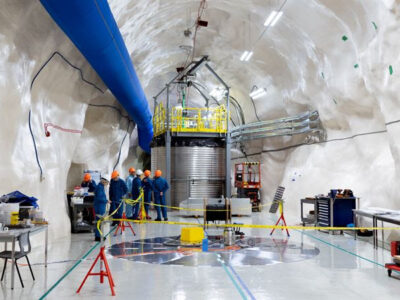
Co-designing power devices with microfluidics for cooling
Managing the heat generated in electronics is a huge problem, especially with smaller package sizes and higher density devices. Usually electronic technologies, designed by electrical engineers, and cooling systems, designed by mechanical engineers, are done independently and separately.
The team at EPFL combined the two with an integrated microfluidic cooling system built into the chip that can directly and efficiently manage the large heat fluxes generated by the transistors.
“Managing the heat produced by these devices is one of the biggest challenges in electronics going forward,” said Prof Elison Matioli at EPFL’s Power and Wide-band-gap Electronics Research Laboratory (Powerlab). “It’s becoming increasingly important to minimize the environmental impact, so we need innovative cooling technologies that can efficiently process the large amounts of heat produced in a sustainable and cost-effective way.”
Along with doctoral student Remco van Erp, the team from the Powerlab developed the technique to extract the heat very near the regions that heat up the most in the device.
“We wanted to combine skills in electrical and mechanical engineering in order to create a new kind of device,” said van Erp, lead author on the paper in Nature today.
They etched the microfluidic channels inside the silicon substrate chip to provide cooling for the planar gallium nitride (GaN) transistors on top so that a cooling liquid can flow inside the chip.
“We placed microfluidic channels very close to the transistor’s hot spots, with a straightforward and integrated fabrication process, so that we could extract the heat in exactly the right place and prevent it from spreading throughout the device,” said Matioli. The cooling liquid they used was deionized water, which doesn’t conduct electricity. “We chose this liquid for our experiments, but we’re already testing other, more effective liquids so that we can extract even more heat out of the transistor,” said van Erp.
Next: Cooling results show 50x boost
The resulting system can extract heat of 1.7 kW/cm2 using only 570mW/cm2 of pumping power.
Using water for the cooling showed a coefficient of performance exceeding 10,000, a 50-fold increase compared to straight microchannels. “By removing the need for large external heat sinks, this approach should enable the realization of very compact power converters integrated on a single chip,” adds van Erp.
“This cooling technology will enable us to make electronic devices even more compact and could considerably reduce energy consumption around the world,” says Matioli. “We’ve eliminated the need for large external heat sinks and shown that it’s possible to create ultra-compact power converters in a single chip. This will prove useful as society becomes increasingly reliant on electronics.”
The initial chip demonstrates the viability of the process, and the next step is to use this in a real world AC-DC converter design. Then the researchers will be looking at how to manage heat in other devices, such as lasers and communications systems.
Related articles on cooling
- BATTERY CELL METRIC SHOWS DIFFERENCE IN ELECTRIC VEHICLE PERFORMANCE
- SPACE GRADE CARBON FIBRE SYSTEM FOR ELECTRIC SUPERCAR
- THREE VARIANTS FOR 100W EDGE SERVERS
Other articles on eeNews Power
- First battery-free energy harvesting GameBoy
- Odyssey Semis aims to displace SiC with GaN
- Skeleton plans graphene battery that charges in 15s
 If you enjoyed this article, you will like the following ones: don't miss them by subscribing to :
eeNews on Google News
If you enjoyed this article, you will like the following ones: don't miss them by subscribing to :
eeNews on Google News




